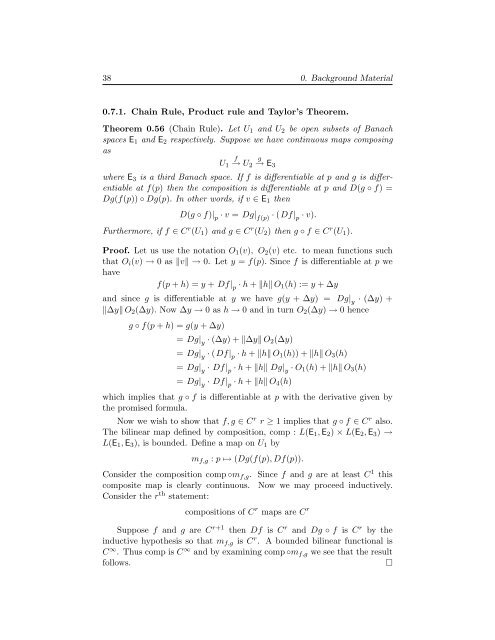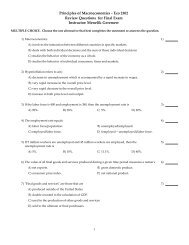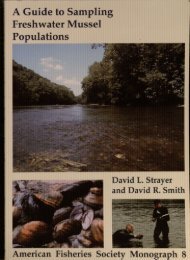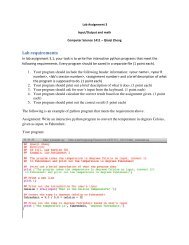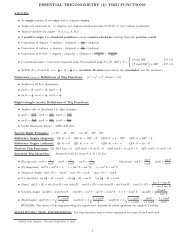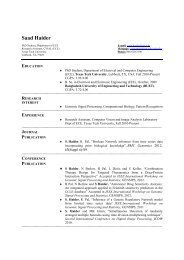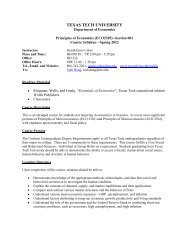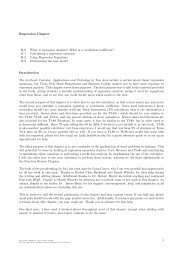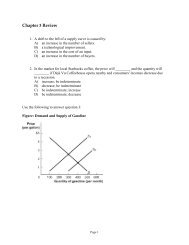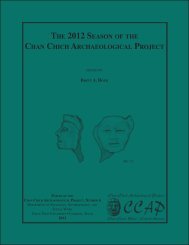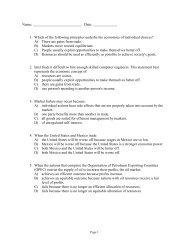Supplement for Manifolds and Differential Geometry Jeffrey M. Lee
Supplement for Manifolds and Differential Geometry Jeffrey M. Lee
Supplement for Manifolds and Differential Geometry Jeffrey M. Lee
You also want an ePaper? Increase the reach of your titles
YUMPU automatically turns print PDFs into web optimized ePapers that Google loves.
38 0. Background Material<br />
0.7.1. Chain Rule, Product rule <strong>and</strong> Taylor’s Theorem.<br />
Theorem 0.56 (Chain Rule). Let U 1 <strong>and</strong> U 2 be open subsets of Banach<br />
spaces E 1 <strong>and</strong> E 2 respectively. Suppose we have continuous maps composing<br />
as<br />
U 1<br />
f<br />
→ U2<br />
g<br />
→ E3<br />
where E 3 is a third Banach space. If f is differentiable at p <strong>and</strong> g is differentiable<br />
at f(p) then the composition is differentiable at p <strong>and</strong> D(g ◦ f) =<br />
Dg(f(p)) ◦ Dg(p). In other words, if v ∈ E 1 then<br />
D(g ◦ f)| p · v = Dg| f(p) · (Df| p · v).<br />
Furthermore, if f ∈ C r (U 1 ) <strong>and</strong> g ∈ C r (U 2 ) then g ◦ f ∈ C r (U 1 ).<br />
Proof. Let us use the notation O 1 (v), O 2 (v) etc. to mean functions such<br />
that O i (v) → 0 as ‖v‖ → 0. Let y = f(p). Since f is differentiable at p we<br />
have<br />
f(p + h) = y + Df| p · h + ‖h‖ O 1 (h) := y + ∆y<br />
<strong>and</strong> since g is differentiable at y we have g(y + ∆y) = Dg| y · (∆y) +<br />
‖∆y‖ O 2 (∆y). Now ∆y → 0 as h → 0 <strong>and</strong> in turn O 2 (∆y) → 0 hence<br />
g ◦ f(p + h) = g(y + ∆y)<br />
= Dg| y · (∆y) + ‖∆y‖ O 2 (∆y)<br />
= Dg| y · (Df| p · h + ‖h‖ O 1 (h)) + ‖h‖ O 3 (h)<br />
= Dg| y · Df| p · h + ‖h‖ Dg| y · O 1 (h) + ‖h‖ O 3 (h)<br />
= Dg| y · Df| p · h + ‖h‖ O 4 (h)<br />
which implies that g ◦ f is differentiable at p with the derivative given by<br />
the promised <strong>for</strong>mula.<br />
Now we wish to show that f, g ∈ C r r ≥ 1 implies that g ◦ f ∈ C r also.<br />
The bilinear map defined by composition, comp : L(E 1 , E 2 ) × L(E 2 , E 3 ) →<br />
L(E 1 , E 3 ), is bounded. Define a map on U 1 by<br />
m f,g : p ↦→ (Dg(f(p), Df(p)).<br />
Consider the composition comp ◦m f,g . Since f <strong>and</strong> g are at least C 1 this<br />
composite map is clearly continuous. Now we may proceed inductively.<br />
Consider the r th statement:<br />
compositions of C r maps are C r<br />
Suppose f <strong>and</strong> g are C r+1 then Df is C r <strong>and</strong> Dg ◦ f is C r by the<br />
inductive hypothesis so that m f,g is C r . A bounded bilinear functional is<br />
C ∞ . Thus comp is C ∞ <strong>and</strong> by examining comp ◦m f,g we see that the result<br />
follows.<br />
□


